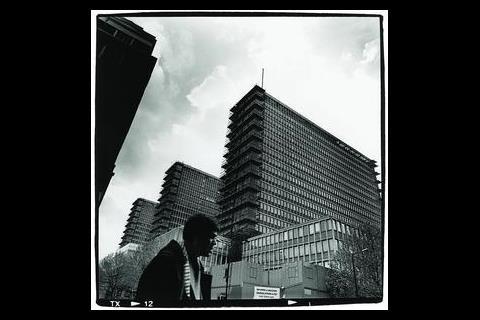The redevelopment of the notorious Three Ugly Sisters of Marsham Street may have taken 14 years, but the Home Office now has a headquarters to be proud of.
The Three Ugly Sisters – former home to the Department of the Environment – was one of the most hated buildings in London. It was also one of the most inefficient: a feasibility study concluded that it was so badly laid out that its 3500 staff could be rehoused in a medium-rise building taking up just two thirds of the site.
And this is exactly what has now been built. The new Home Office building, which has gone up on London’s Marsham Street, has been constructed by the French giant Bouygues Construction. It’s one of the company’s first schemes in the UK PFI market and will be run on behalf of the government for the next 26 years, a total contract value of about £311m.
Under the agreement, key performance indicators prescribed exactly how the building was to operate and perform. As such, and to avoid penalties, the M&E systems have been designed with surety of operation in mind.
Each of the three blocks making up the development are serviced in two halves, served by cores containing lifts, stairs, toilets, plant rooms and IT distribution rooms. Environmental conditioning to the general office areas is provided through an energy transfer system, consisting of a number of reverse cycle heat pumps connected to a low temperature (29°C-35°C) water circuit. Thermal energy is only added or rejected from this system when there is an overall energy imbalance, using the closed circuit cooling towers or gas-fired boiler plant.
The office areas are ventilated through roof-level air handling units on each block, which contain hydroscopic thermal wheels and humidification plant as well as pre-heat coils and re-heat batteries connected to the energy transfer system. The pre-conditioned air is then distributed through ductwork to serve on-floor air-handling units. Exhaust air is pulled out from the floor plates through the central atriums back to the rooftop units.
But this development isn’t just about office space: the really impressive statistic is that there was enough space left over for 114 flats, plus shops and restaurants. And ugly it isn’t.
Client The Home Office
PFI consortium HSBC Infrastructure; Bouygues Construction; Ecovert FM
Architect Terry Farrell & Partners
Services engineers Flack & Kurtz; Battle McCarthy
Structural engineer Pell Frischman
M&E contractor Shepherd Engineering
Source
Building Sustainable Design
























No comments yet